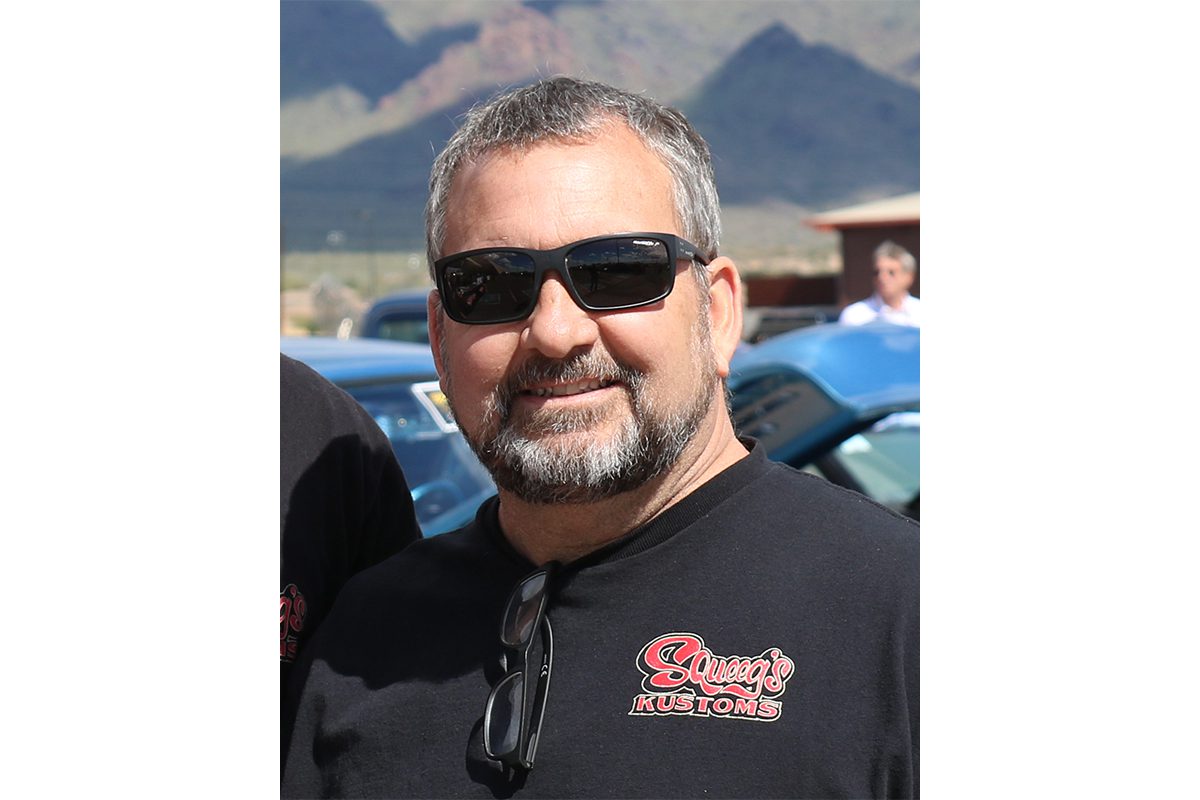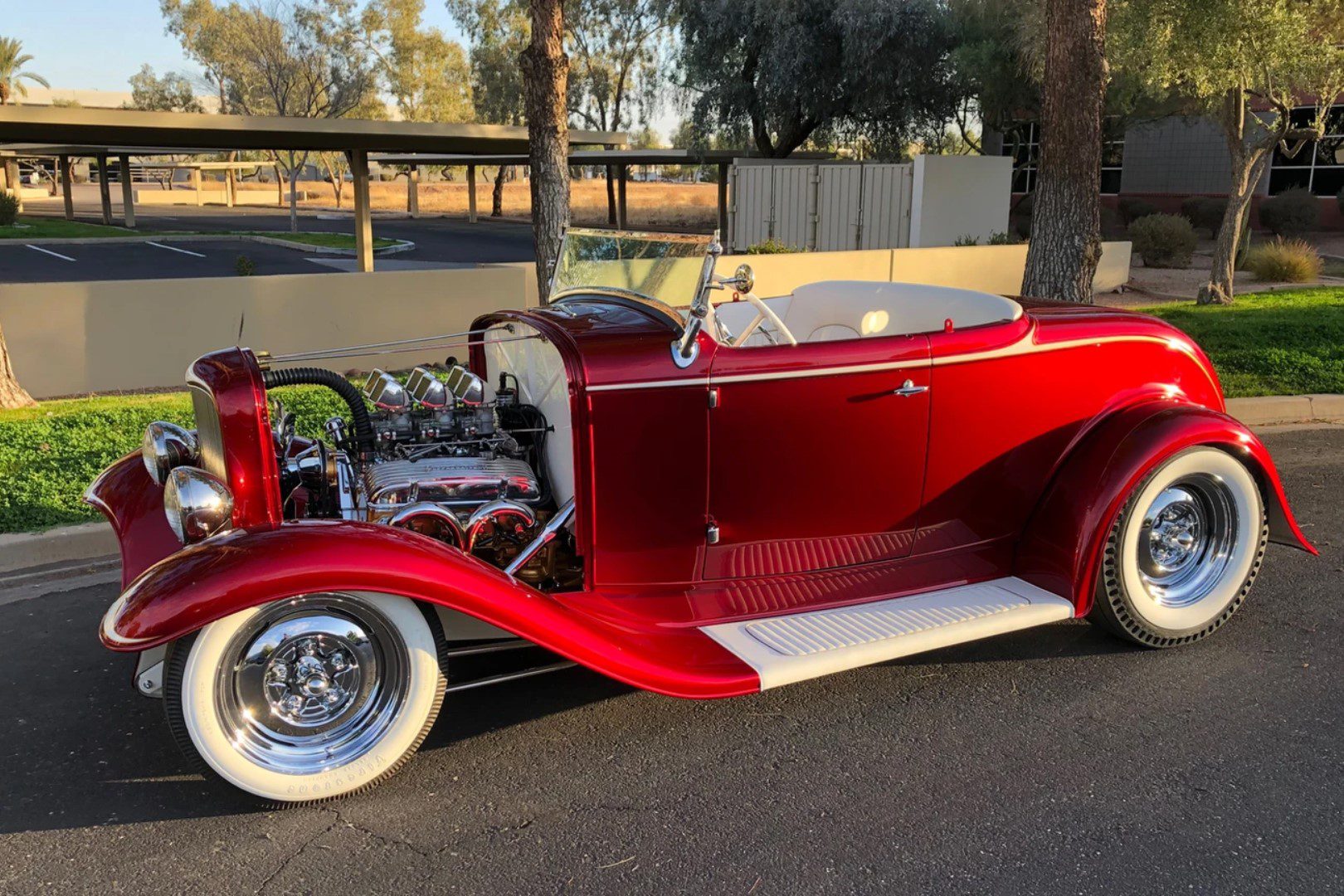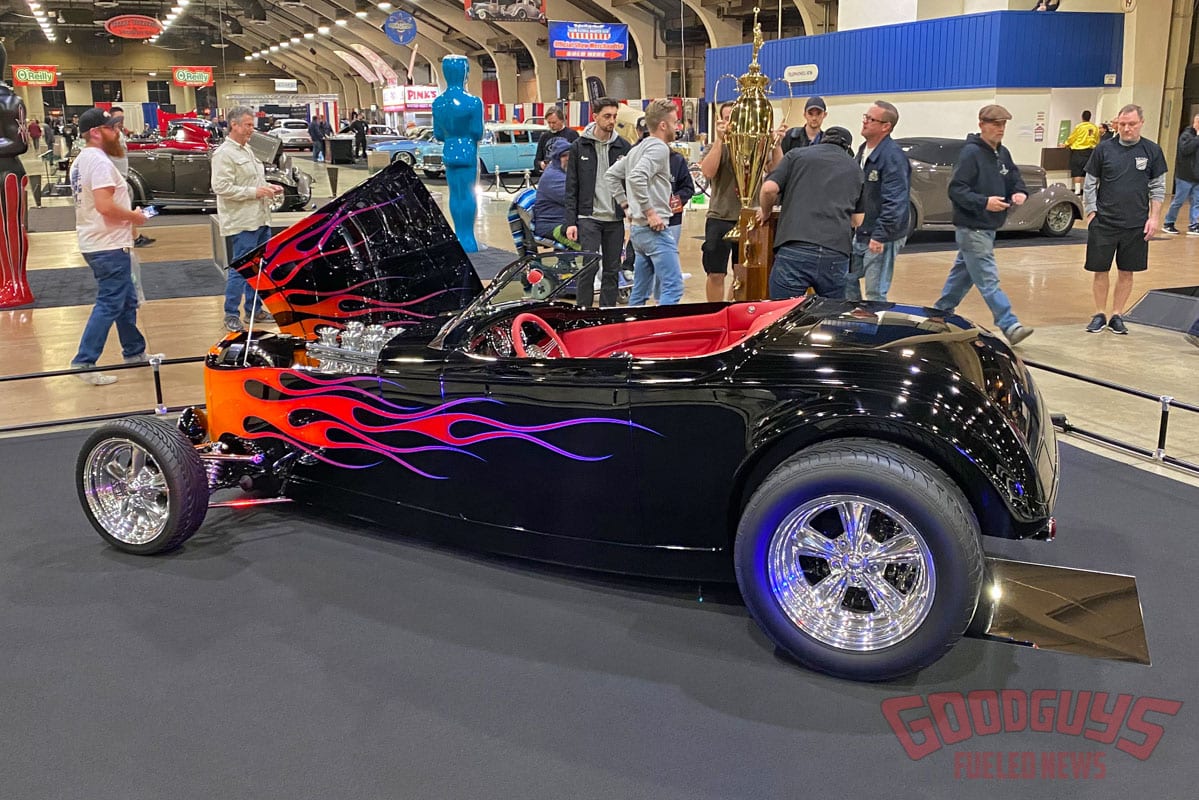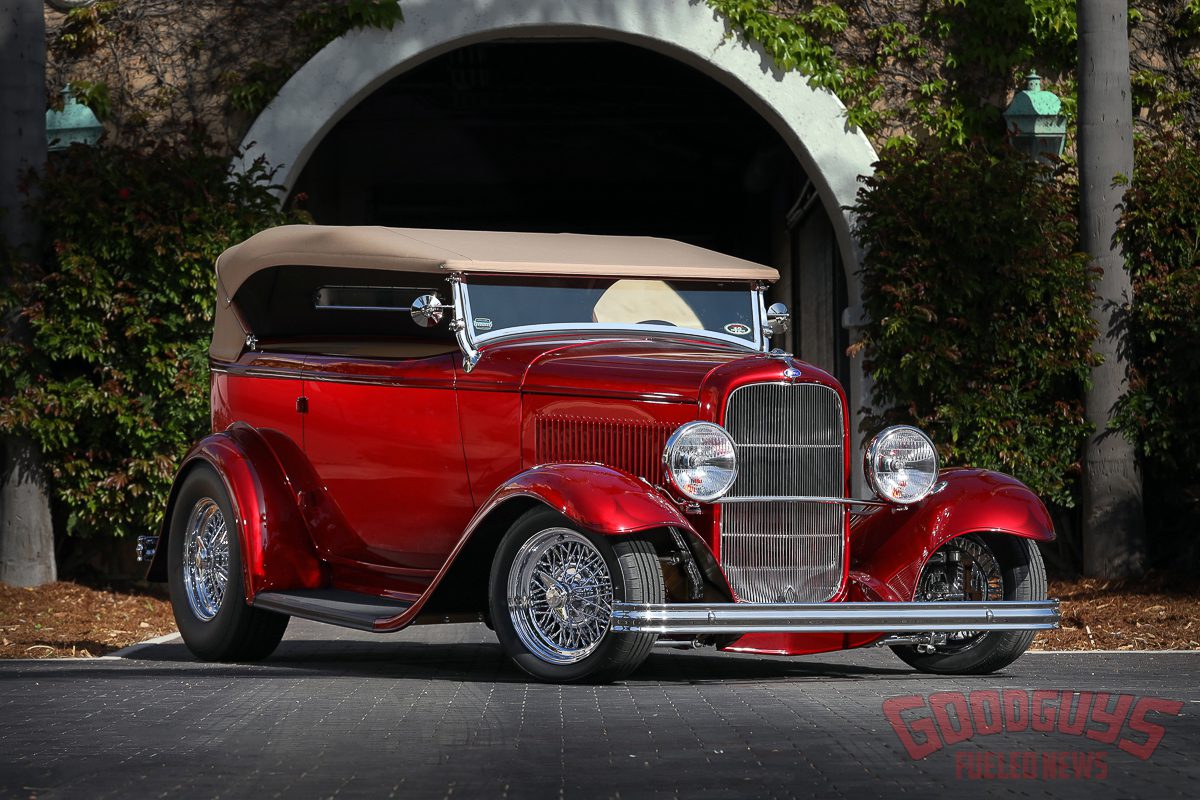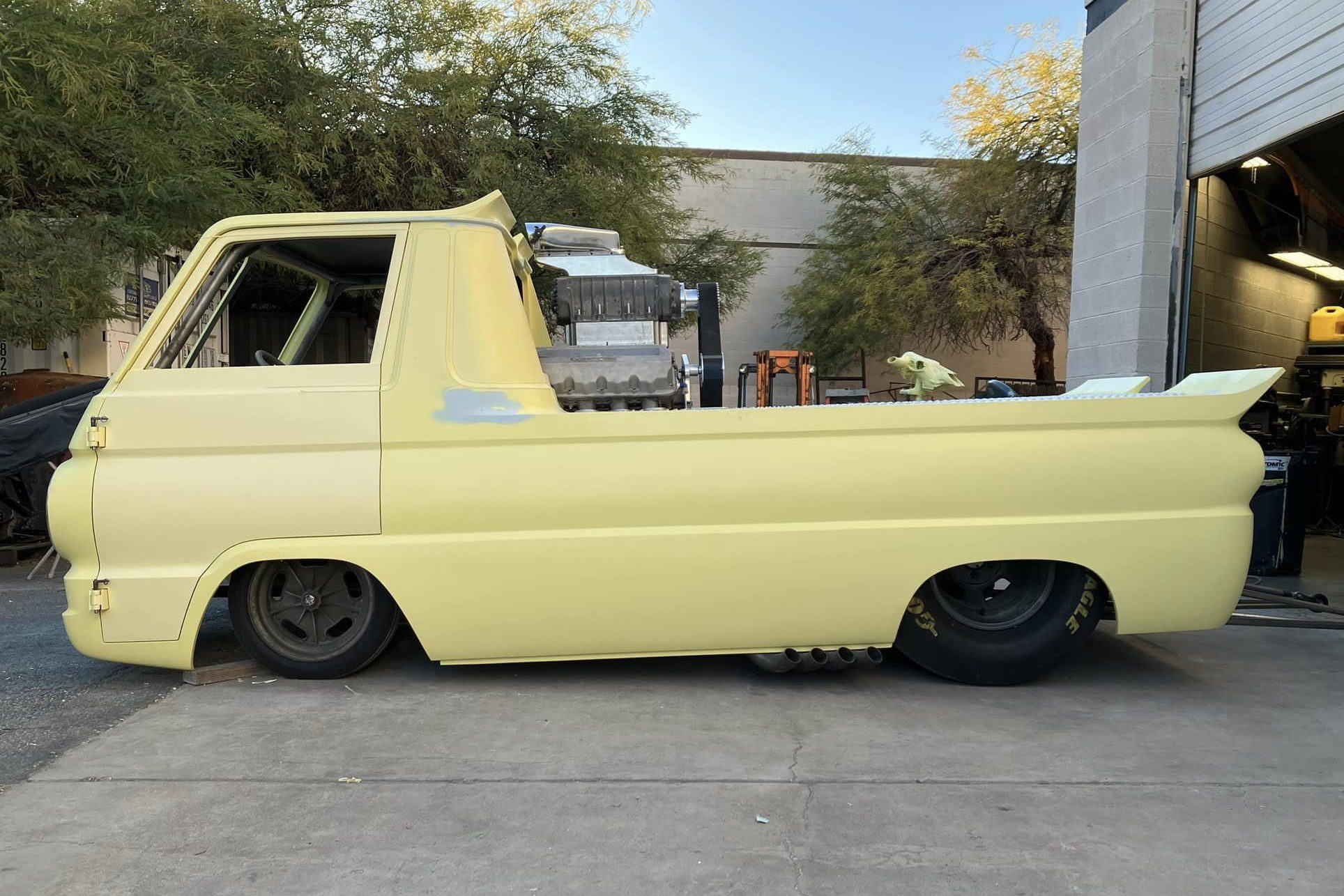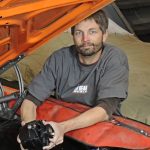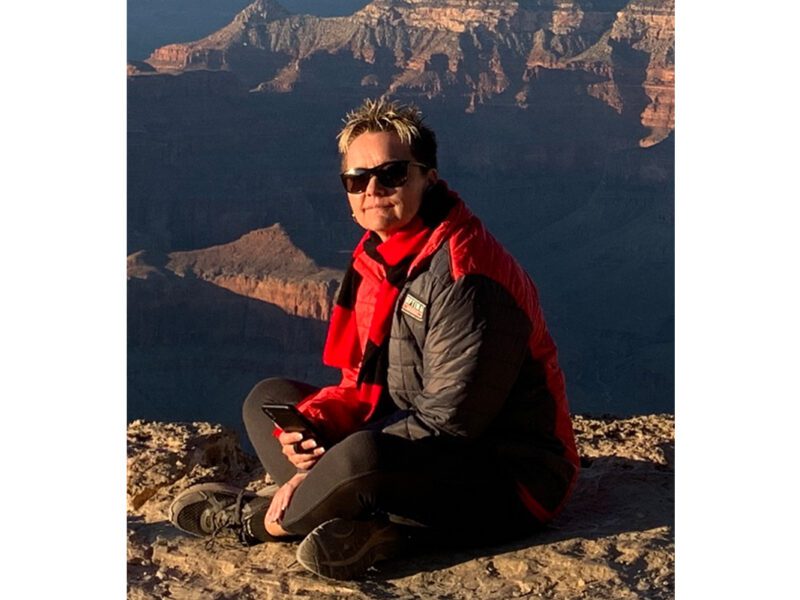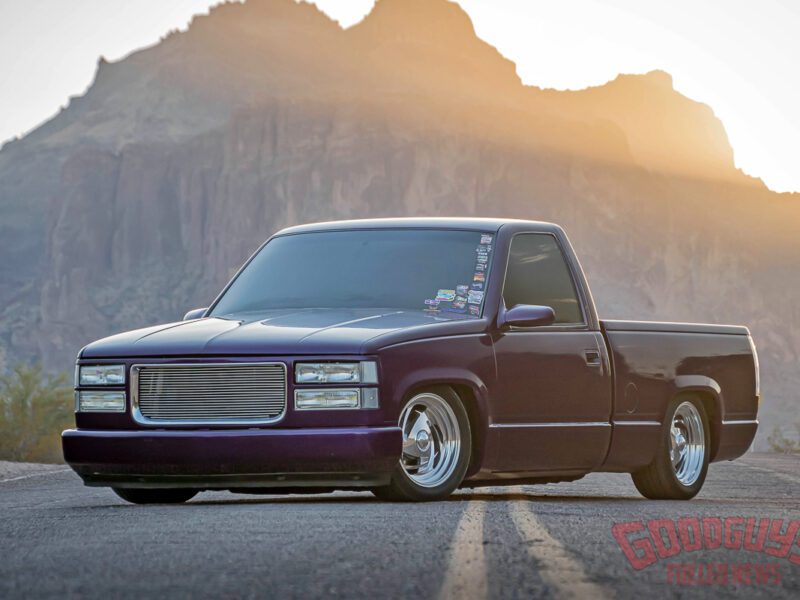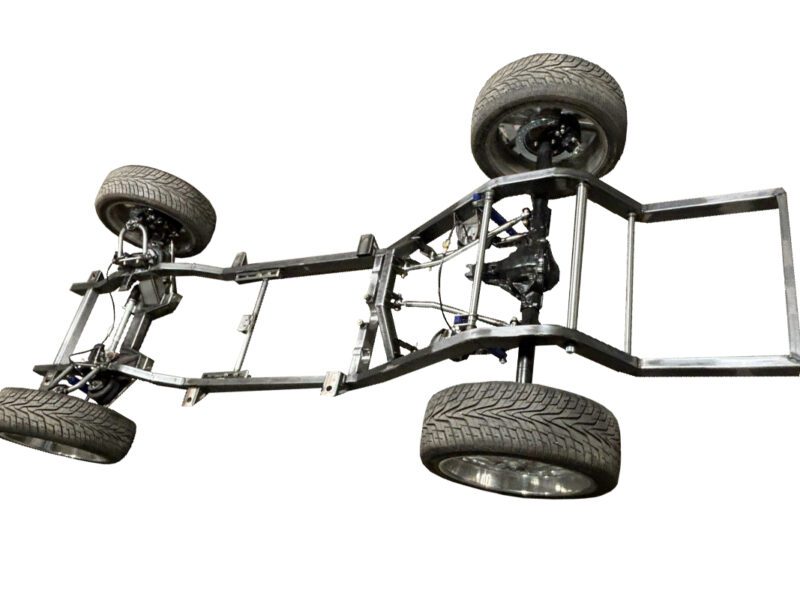Five Minutes With…Doug Jerger of Squeeg’s Kustoms
Doug Jerger didn’t name his shop Squeeg’s Kustoms. That name came from his father, known in hot rod circles as Squeeg, who opened the custom paint shop back in 1964 in Ohio before moving it to Arizona 10 years later. After graduating high school in 1986, Doug started working full time at the shop, honing his own skills and eye for design. Once his dad retired, Doug kept the name alive and has kept the shop booming with his own personal style of customization and of course, the amazing paint work.
Doug has been immersed in hot rods his entire life and has gone on to paint and build a long list of high-profile, award-winning rides including an America’s Most Beautiful Roadster winner. Most recently the shop painted and finish assembled the Goodguys 2024 Meguiar’s Street Rod d’ Elegance, a candy apple red ’32 Ford Phaeton owned by Ken Reister. We were able to steal a few minutes with Doug to get his thoughts on some hot rod topics.
GG: What is your favorite part – and least favorite part – of a custom build?
Doug Jerger: My favorite part is being able to create and watch your design come to life. It’s just cool to see this one-off idea come to life and getting through all the obstacles to get there.
The least favorite part is dealing with a frustrated customer that has never built a car before. In many cases, they just don’t understand how long it takes and the cost to do it. When asked how much it would cost, my dad used to reply with, “How long is a string?” It’s just a tough question to answer for someone who hasn’t been through the process.
GG: What is one thing people don’t realize about high quality paint work?
Jerger: The time involved. They don’t realize the amount of manual labor that goes into a good paint job. From the metal up is about 90-percent hand sanding, over and over and over again. With lacquers we’d wet sand it, buff it, and done. With modern paints, we start sanding the paint with a hard block and 800-grit and work our way up to 1000, 1200, 1500, and 2500 before starting to buff. That means sanding the car multiple times, on top of all the times it is sanded before paint.
GG: What insight can you offer other enthusiasts on color selection?
Jerger: My biggest suggestion is not to follow trends. I might catch flack for this, but the grays and dismal colors have really just run their course. I look at that color spectrum the same as the pastels from the early-’90s, which were big and ran their course. In the beginning these colors were great, but they seem used up. I tell my customers to consider something that stands alone like a candy, or for a darker color, let’s find something that sets the car apart.
GG: Do you see interest in pre-’49 cars fading? And where do you see things going in the next decade?
Jerger: Ten years flies by and if you think back 10 years ago, cars weren’t that different. I feel pre-’49 cars are just as popular today. Every 10-20 years a new generation comes in and today it seems like kids in their teens are really digging pre-’49 cars. It’s like a roller coaster, some cars will be hot for a decade, then soften up. One thing about the future of hot rodding is that the bar keeps moving higher in quality. Things are going to get more expensive and more separated as the million-dollar cars go on their own tangent while guys in their garage continue to build what they can afford, but thanks to technology and tools available, their quality is going to be a lot better, too.
GG: We’re seeing more ’80s street machines coming back out. Do you think we’re heading back to monochrome and graphics?
Jerger: I see pro street and street machines coming back, but I think we’ll see more of a blending of ’70s trim, chrome, and wild paint from show cars and funny cars combined with the low pro street stance and big engines of the ’80s, but without the pastels and monochromatic look.
GG: Other than your father, who were some of your early influences?
Jerger: In junior high and high school, I’d go to the store and pick up three or four magazines and they all had the pro builders from Boyd to Brizio, and custom painters like Pete Santini and Bill Carter. Those were all very influential to me growing up in Ohio. After I graduated in ‘86 and started working with my dad, I saw other work that struck me like Scott Sulivan’s style, Matt Hay, and of course Troy Trepanier. John Buttera was huge. He was just the master of everything…he started more trends than anyone. Dave Lane’s stuff was second to none, too.
GG: What is the most important lesson you learned from your father?
Jerger: Stay humble. Don’t get a big head and don’t brag about all the great things you can do. He said, “Whatever work you create will get you your next work.” He also explained that you have to make your customers happy, even if that means eating some hours. Remember, you don’t make a killing at this, you make a living. Stay busy and work hard.
GG: Any advice for a DIY guy getting ready to paint their car at home?
Jerger: Stay at it, don’t give up. It’s easy to get sidetracked and then the project sits half done. Even if you work on it an hour a day, stay at it. The first 10 minutes is the toughest, but then you get in a rhythm and start getting stuff done. It takes time to do things right and if your gut feeling says something isn’t right, don’t skip over it, go back and do it right. Once it’s painted, you’ll see the light at the end of the tunnel. I really like to go to a car show and see guys that have painted their own cars, so stay at it!

